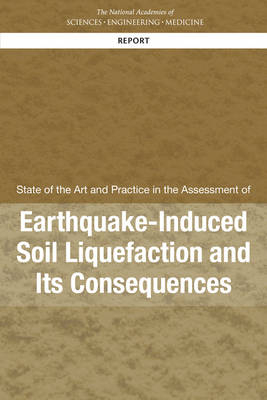
State of the Art and Practice in the Assessment of Earthquake-Induced Soil Liquefaction and Its Consequences
National Academies Press (Verlag)
9780309440271 (ISBN)
- Titel z.Zt. nicht lieferbar
- Versandkostenfrei
- Auch auf Rechnung
- Artikel merken
Past damage and destruction caused by liquefaction underline the importance of accurate assessments of where liquefaction is likely and of what the consequences of liquefaction may be. Such assessments are needed to protect life and safety and to mitigate economic, environmental, and societal impacts of liquefaction in a cost-effective manner. Assessment methods exist, but methods to assess the potential for liquefaction triggering are more mature than are those to predict liquefaction consequences, and the earthquake engineering community wrestles with the differences among the various assessment methods for both liquefaction triggering and consequences.
State of the Art and Practice in the Assessment of Earthquake-Induced Soil Liquefaction and Its Consequences evaluates these various methods, focusing on those developed within the past 20 years, and recommends strategies to minimize uncertainties in the short term and to develop improved methods to assess liquefaction and its consequences in the long term. This report represents a first attempt within the geotechnical earthquake engineering community to consider, in such a manner, the various methods to assess liquefaction consequences.
Table of Contents
Front Matter
Summary
1 Introduction
2 A Primer on Earthquake-Induced Soil Liquefaction
3 Case Histories
4 The Simplified Stress-Based Approach to Triggering Assessment
5 Alternative Approaches to Liquefaction Triggering Assessment
6 Residual Shear Strength of Liquefied Soil
7 Empirical and Semiempirical Methods for Evaluating Liquefaction Consequences
8 Use of Computational Mechanics to Predict Liquefaction and Its Consequences
9 Performance-Based Evaluation and Design
10 Recommendations
References
Appendixes
Appendix A: Biographical Sketches of Committee Members
Appendix B: Meeting Agendas and Workshop Participants
Appendix C: Histograms (or parameter distributions) of Recent Liquefaction Triggering Databases
Appendix D: General Description of Performance-Based Design
Appendix E: Glossary
1 Front Matter; 2 Summary; 3 1 Introduction; 4 2 A Primer on Earthquake-Induced Soil Liquefaction; 5 3 Case Histories; 6 4 The Simplified Stress-Based Approach to Triggering Assessment; 7 5 Alternative Approaches to Liquefaction Triggering Assessment; 8 6 Residual Shear Strength of Liquefied Soil; 9 7 Empirical and Semi-Empirical Methods for Evaluating Liquefaction Consequences; 10 8 Use of Computational Mechanics to Predict Liquefaction and Its Consequences; 11 9 Performance-Based Evaluation and Design; 12 10 Recommendations; 13 References; 14 Appendix A: Biographical Sketches of Committee Members; 15 Appendix B: Meeting Agendas and Workshop Participants; 16 Appendix C: Histograms (or parameter distributions) of Recent Liquefaction Triggering Databases; 17 Appendix D: General Description of Performance-Based Design; 18 Appendix E: Glossary
| Erscheinungsdatum | 08.02.2019 |
|---|---|
| Verlagsort | Washington |
| Sprache | englisch |
| Maße | 216 x 279 mm |
| Themenwelt | Naturwissenschaften ► Geowissenschaften ► Geologie |
| ISBN-13 | 9780309440271 / 9780309440271 |
| Zustand | Neuware |
| Informationen gemäß Produktsicherheitsverordnung (GPSR) | |
| Haben Sie eine Frage zum Produkt? |
aus dem Bereich


